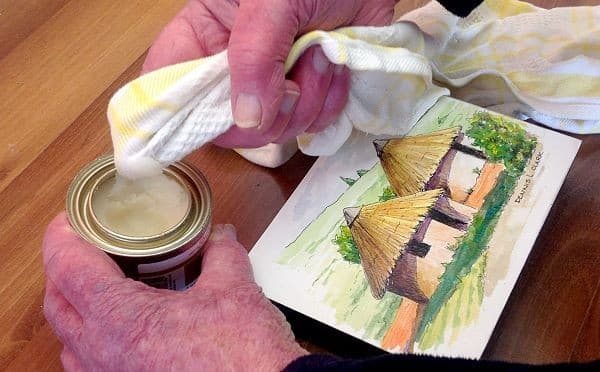Painting is a beautiful form of artistic expression on the canvas. Every paint enthusiast has a preferred medium of painting.
A major decision an artist has to make is the kind of paint they should use to make their colorful painting ideas a reality.
The two major forms of painting are oil painting and acrylic painting. If you are a beginner in this art form and want to understand the nuances of these two prominent art forms, you have come to the right place.
Although each kind of paint has its perks and benefits, understanding their key differences can help you choose one for your next painting adventure. Let’s begin!
What is Oil Painting?
Oil painting is a painting that uses pigments mixed with a binder. The binder can be a drying oil like linseed oil.
These paints are made by mixing the pigments into the oil. The presence of oil in the paint provides a shiny look to the painting.
A major difference between oil painting and other forms of painting is that oil painting provides intense color effects, and they have depth in them.
Oil painting also allows the artists to use multiple layers of paint, which helps them beautifully blend one color into another in various ways.
This provides a wide range of possibilities to express themselves on canvas.
What is Acrylic Painting?
A painting done with acrylic paints is known as acrylic painting. Acrylic paint is made with pigment particles suspended in acrylic polymer.
It is known for its quick-drying properties. The composition of acrylic paint involves pigment, binder, and solvent (water).
Certain other chemicals can be used to enhance the properties of the paint. A drawback of acrylic painting can be its non-waterproof qualities.
They can be used on various surfaces, whether paper, canvas, card, or anything else. While applying acrylic paint, you don’t have to worry about color change.
Acrylic paints retain their color for a long time, unlike oil-based paints.
Pros and Cons of Acrylic Paint
Acrylic paints can be used in various mediums, making it perfect for someone beginning to learn painting.
It dries quickly, which may allow artists to complete their paintings quickly. Also, the colors appear a bit brighter in acrylic paints than in oil paints.
They are cheaper, which is great for someone who is starting to learn to paint.
However, blending with acrylic paints can be challenging due to the quick drying time. It also offers a limited work window due to the inability of paint to remain wet for a longer time.
Pros and Cons of Oil Paints
Slow drying time is perhaps the most significant advantage of oil paints. This allows the artists to work around their paintings for a longer period.
It also offers great blending capacity. Oil paints reflect light and offer a glossy finish to the painting.
They also have an archival appeal and retain their aesthetic properties for a long time. However, its slow drying time can be disadvantageous sometimes, especially for someone just learning to paint.
Oil paints have a certain smell because of the addition of turpentine. They are also costlier than acrylic paints.
Conclusion
Each kind of paint has its unique characteristics and disadvantages.
While acrylic paints are known for their quick-drying properties, the slow drying of oil paint can be advantageous for someone who takes time to work around their painting.
It may also depend on the atmosphere a person is working in. For example, acrylic paint may be best for someone working in enclosed spaces, as it has a low odor level compared to oil paints.
It can be conclusively stated that both paints have benefits and drawbacks, and people can choose what works for them based on their artistic preferences and goals.
Hope you liked reading it. Let us know in the comments.
Frequently Asked Questions
1. Can We Mix Oil and Acrylic Paint?
It is not advised to mix both of these paints. If you want to work with both paints, you can go with a base of acrylic paint, wait for it to fry, and work with oil paint on top of it.
2. How Should I Clean My Brushes?
Do not leave your brushes in paints or water for long. Leaving it in the water may loosen the glue in the bristles. You can get a brush cleaner and use it to clean your brush. Always remember to dry your brushes properly after cleaning them.
3. What Kind of Paint is Good for Large-Scale Work?
Blending different colors on a canvas can be tedious, and since acrylic paints dry too fast, it may not be a great idea to work with acrylic paints while working on a large scale. Oil painting can be a better option for a large-scale project.













